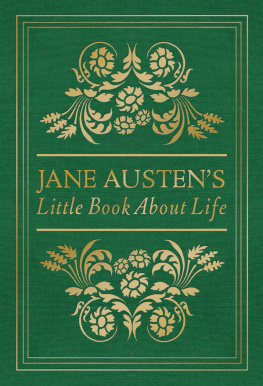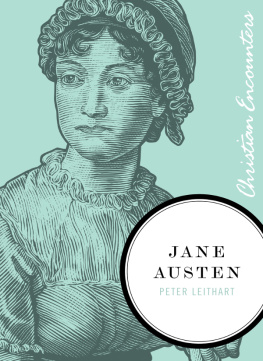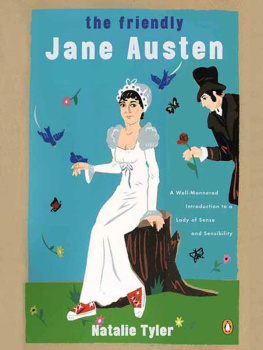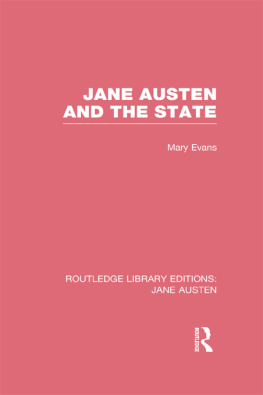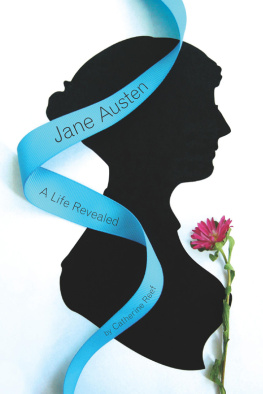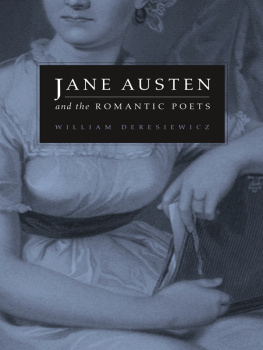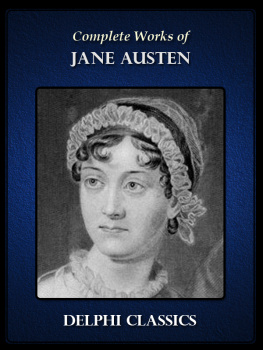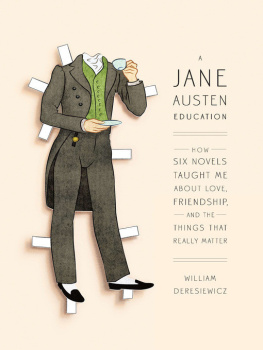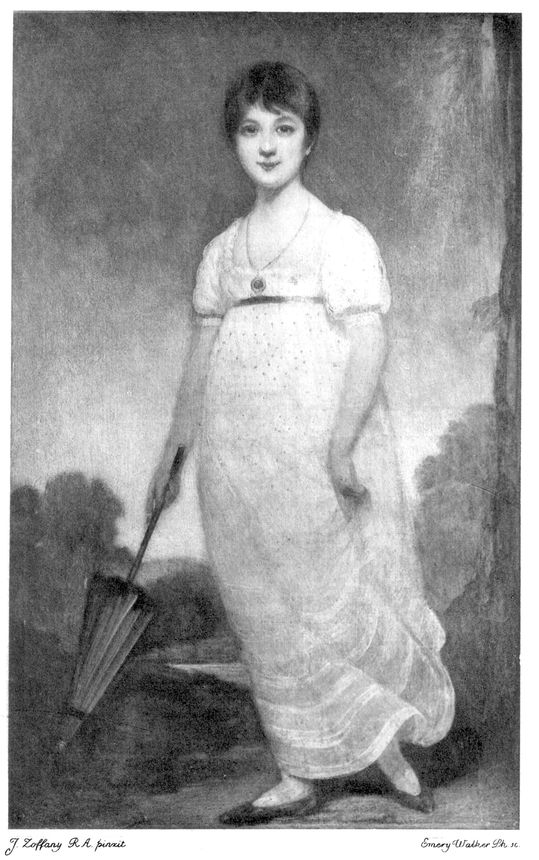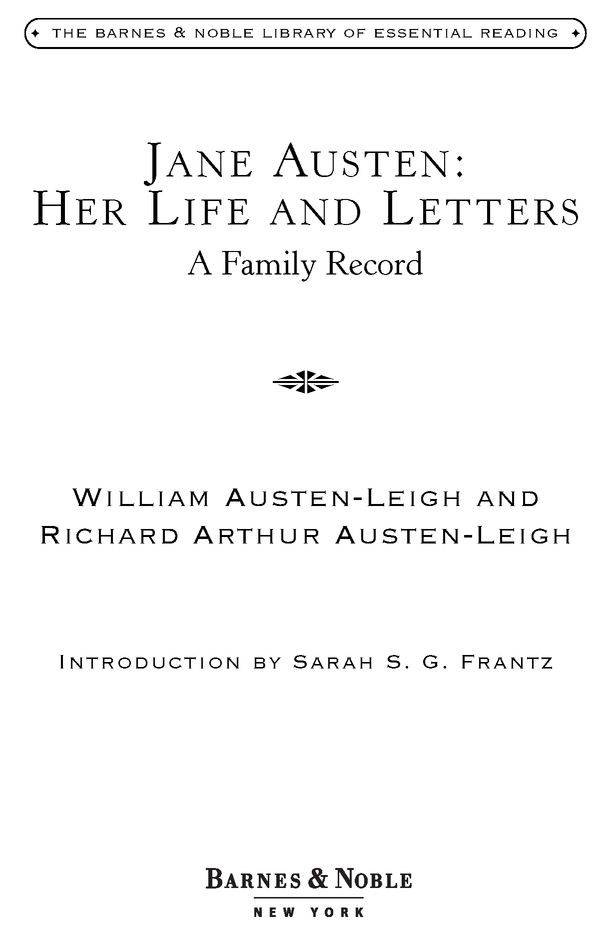Table of Contents
June Austen
INTRODUCTION
ALMOST ONE HUNDRED YEARS AFTER THE DEATH OF JANE AUSTEN, HER grandnephew William Austen-Leigh and his nephew Richard Arthur Austen-Leigh published Jane Austen: Her Life and Letters. A Family Record (1913). Today, Jane Austen, one of the most readable, most influential, and most beloved novelists of the English language, is the subject of an ever-increasing number of biographies, speculations, and even fictional accounts. However, prior to the publication of Her Life and Letters at the beginning of the twentieth century, information about her life and family was scant, entirely inadequate to the task of satisfying the rapacious hunger for details of her growing, late-Victorian audience. Her Life and Letters, then, provided the most comprehensive biographical account of Jane Austen and quickly and deservedly became the gold standard of and foundation for Austen biographies for the next seventy-five years. The book lovingly details the ancestry, marriages, births, scandals, and deaths of the Austen family; Janes own birth, childhood, adolescence, and maturity; the everyday minutiae of her life, the circumstances in which she wrote her juvenilia and her six novels, and her early death. Using Jane Austens own letters, additional letters sent between a large and fond family, and family reminiscences, William and Richard Austen-Leigh continued the family tradition of carefully nurturing the literary and personal reputation of a literary icon who also happened to be a most beloved aunt.
Jane Austen was born in 1775, the seventh of eight children, the second of two daughters of Cassandra Leigh Austen and the Reverend George Austen, rector of Steventon, a small town in Hampshire, England. Despite less than two years of formal education, Jane was a voracious reader and devoured the plays, poetry, and essays of English literature. She was also an ardent admirer of the newfangled sensation of the eighteenth century, the novel, and began to write her own in her early twenties. On her fathers retirement in 1801, Jane and her only sister, Cassandra, both still unmarried, moved with their parents to Bath, where they lived for five years until the Reverend Austens death. The three women then lived in Southampton for three years, and finally returned to the country to settle at Chawton, in a house on the estate of one of Janes brothers close to her childhood home. It is from Chawton that Jane finally revised and published her first two novels, Sense and Sensibility (1811) and Pride and Prejudice (1813); wrote and published her next two novels, Mansfield Park (1814) and Emma (1815); and wrote Persuasion. A severe illness convinced her to seek medical attention in Winchester, where she died in July 1817 at the age of forty-one. Persuasion and an early work, Northanger Abbey, were published posthumously by her favorite brother, Henry Austen, in 1817.
Richard and William Austen-Leigh were by no means the first or last of Janes extended family to act as her biographer. Janes great-great-great-niece, Joan Austen-Leigh, wrote in 1989, For us, in the Austen family, to maintain the importance of our most important aunt, has been the pleasure of successive generations. Prior to the publication of Richard and William Austen-Leighs Her Life and Letters, Janes brother Henry had revealed her name to the world in A Biographical Notice of the Author, her nephew James Edward Austen-Leigh had published A Memoir of Jane Austen, both his sister Caroline Austen and his half-sister Anna Lefroy had written personal reminiscences of their aunt, and Janes grandnephew, Lord Brabourne, had published The Letters of Jane Austen. It is worth understanding the provenance and contents of each of these biographies not only to understand the mighty task that William and Richard Austen-Leigh undertook in consolidating these different sources into their comprehensive biography of the aunt they never knew, but also to understand the successes and limitations of the result.
Jane Austen had always published anonymously, choosing to label her novels as By a Lady or By the Author of her previous works, rather than risking the fameor rather the infamyof affixing her own name to her children, as she called her novels in a letter to her sister. Janes brother Henry Austen attached a Biographical Notice of the Author to the posthumous combined publication of her very first novel, Northanger Abbey, and her very last, Persuasion, finally revealing her name to the world, five months after her death. In labeling Jane a writer, however, Henry exposed his sisters reputation as a woman to the fickleness of public opinion, and he immediately and probably unconsciously attempted a preemptive neutralization of any potential damage by declaring that, except for writing and publishing six novels, his sisters life was not by any means a life of event. While providing the bare facts of Janes birth, homes, and her fortitude during her illness and death, Henrys description of his sister was almost entirely unrealistic, beginning the family whitewashing of Janes rather acerbic nature: Faultless herself, as nearly as human nature can be, she always sought, in the faults of others, something to excuse, to forgive or forget. Where extenuation was impossible, she had a sure refuge in silence. She never uttered either a hasty, a silly, or a severe expression. This of the woman who wrote unrepentantly to her sister on October 27, 1798, Mrs. Hall, of Sherborne, was brought to bed yesterday of a dead child, some weeks before she expected, owing to a fright. I suppose she happened unawares to look at her husband.
Henrys angelic portrait of his sister, then, did not match the implied personality of an author who could create with such relish characters like the officious Lady Catherine de Bourgh of Pride and Prejudice, who says with a perfectly straight face, There are few people in England, I suppose, who have more true enjoyment of music than myself, or a better natural taste. If I had ever learnt, I should have been a great proficient, or the petty, spiteful Mrs. Norris of Mansfield Park, or Mrs. Musgrove of Persuasion and her large fat sighings over the destiny of a son, whom alive nobody had cared for. Henrys unrealistic portrait of his sister was almost worse than knowing nothing about her: rather than informing, it served merely to highlight how little was known about Jane Austen the person.
In 1870, Jane Austens nephew, James Edward Austen-Leigh, collected, wrote, and published A Memoir of Jane Austen. The oldest son of James Austen, Janes oldest brother, James Edward, born in 1798, spent a lot of time with his aunts and grandmother after they settled at Chawton. Fifty years after Janes death, when James Edward was in his early seventies, he was one of the last surviving members of the family who had spent significant time with his aunt. As such, he felt it incumbent on him to commit to paper his memories of his aunt: I am the more inclined to undertake the task from a conviction that, however little I may have to tell, no one else is left who could tell so much of her. In writing and publishing his Memoir, however, James Edward was not merely satisfying the public demand for more information about his aunthe was also retaining for the family the sole ownership of the right to pen a biography in the first place. The very public demand that spurred him to write also threatened the possibility that an outsider would undertake the task, a possibility of which the family violently disapproved. Caroline explains:


